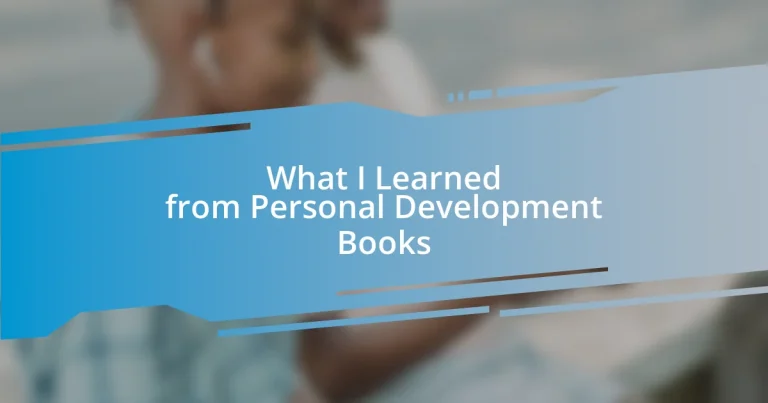Key takeaways:
- Setting clear goals acts as a motivational compass, enhancing focus and providing a sense of achievement.
- Implementing techniques like the Two-Minute Rule and habit stacking can effectively build and integrate positive habits into daily routines.
- Self-reflection fosters personal growth by promoting clarity on goals and values, accountability for choices, and resilience in facing challenges.
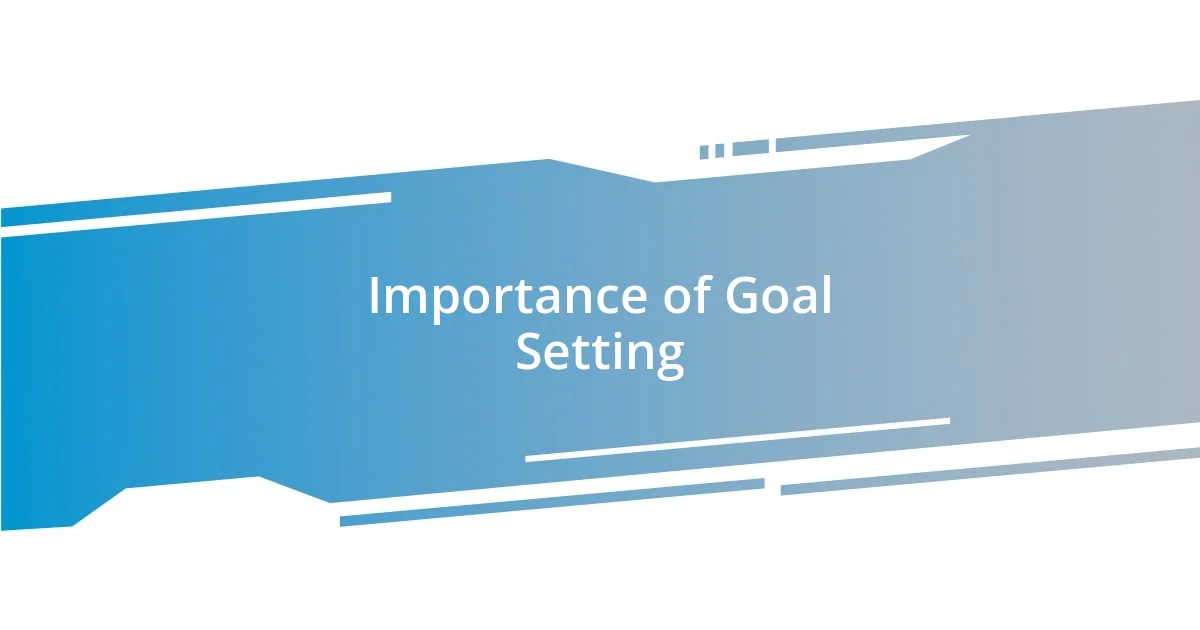
Importance of Goal Setting
When I first started diving into personal development books, I quickly learned that setting clear goals can feel like charting a course on an unmarked map. You know the satisfaction of crossing something off your to-do list, right? That sense of achievement is multiplied when your goals are specific and tangible, guiding you in the direction you want to go.
Reflecting on my experiences, I’ve realized that goals act as a motivational compass, especially when challenges arise. I remember setting a fitness goal to run a half marathon. At times, the training felt grueling, but my clear target kept me focused. How many times have you found yourself sidetracked by life’s distractions? Having a goal made the journey feel rewarding rather than burdensome.
Additionally, I’ve noticed that goal setting serves as a powerful tool for self-reflection. When I took the time to evaluate my progress toward my personal goals, it highlighted my growth in unexpected ways. Have you ever thought about how reviewing your goals can spark new insights? I often felt a rush of excitement when I recognized the strides I’d made, reinforcing the belief that goal setting truly transforms aspirations into achievements.
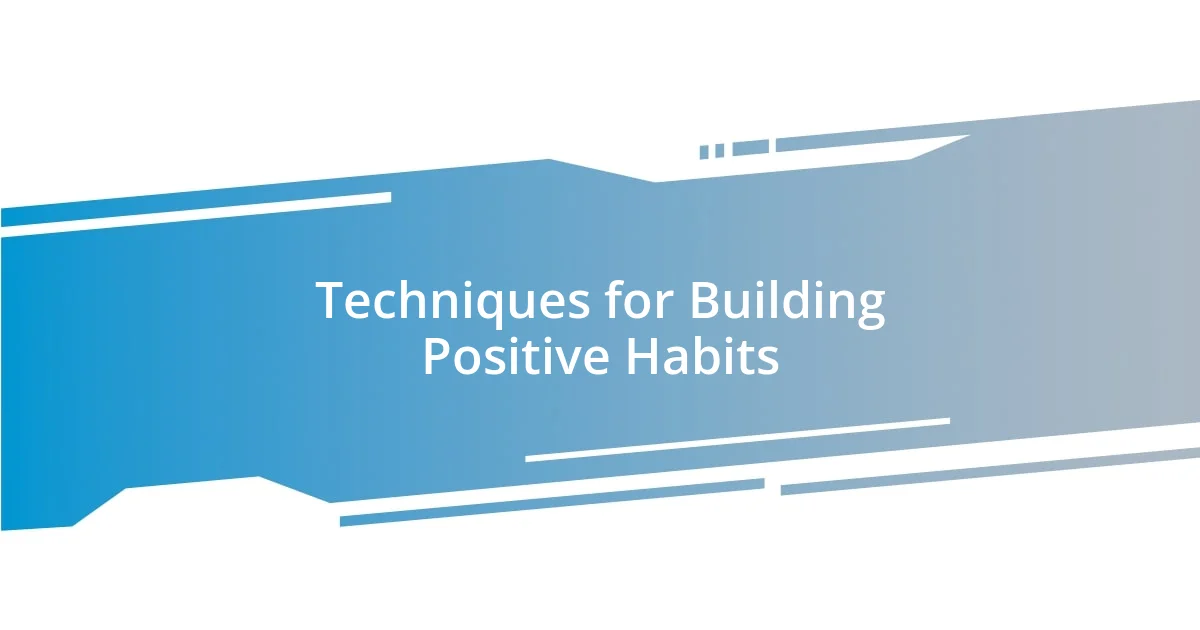
Techniques for Building Positive Habits
Building positive habits is much like planting a garden; it requires consistent effort, the right techniques, and a bit of patience. One technique I found incredibly effective is the “Two-Minute Rule.” This approach suggests that any habit I want to build should take less than two minutes to start. For instance, instead of telling myself to exercise for an hour, I simply commit to getting up and doing just two minutes of stretching. I can tell you that once I begin, I often find the momentum carries me into a longer workout. Isn’t it funny how sometimes just starting is the hardest part?
Another powerful technique that resonated with me is habit stacking. I began linking new habits to existing ones. For example, after brushing my teeth in the morning, I immediately meditate for a couple of minutes. This connects something I already do with a new habit I want to establish. As I made this connection, I found that it not only reduced the effort of remembering but also made these practices feel more natural. Have you ever tried to attach a new behavior to an established one? The ease of incorporating something new into my routine has been a real game-changer for staying consistent.
Finally, tracking my habits has added a layer of motivation that I didn’t anticipate. I started logging my progress in a simple app, and seeing my streaks build up has fueled my desire to maintain those good habits. It’s like having a visual representation of my dedication. Whenever I glance at my habit tracker, I can’t help but feel a sense of pride, reflecting on my commitment. It’s amazing what a little accountability can do, wouldn’t you agree?
| Technique | Description |
|---|---|
| Two-Minute Rule | Start habits that take less than two minutes to initiate. |
| Habit Stacking | Link a new habit to an already established one to create seamless integration. |
| Habit Tracking | Monitor progress visually to enhance accountability and motivation. |
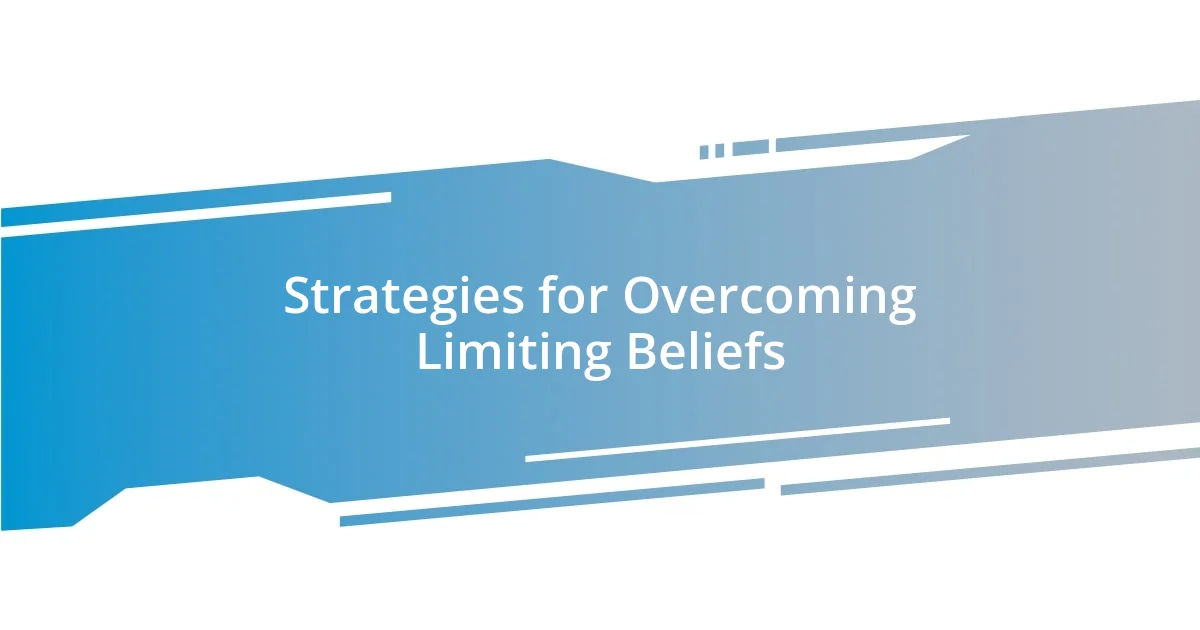
Strategies for Overcoming Limiting Beliefs
Overcoming limiting beliefs can be a transformative journey, and I’ve found that recognizing and challenging these beliefs is the first crucial step. I remember grappling with the belief that I wasn’t “good enough” to pursue certain career opportunities. It took me a while to realize that this thought was merely a shadow of my fears. By actively identifying such beliefs, I could begin to dismantle them. What experiences have you had with beliefs holding you back?
Here are some practical strategies I’ve discovered along the way:
- Question Your Beliefs: Ask yourself where your limiting beliefs come from. Are they based on past experiences or societal pressures? This exploration can reveal their fragility.
- Reframe Your Thoughts: Try turning negative beliefs into positive affirmations. For instance, instead of saying “I can’t do this,” I’d tell myself, “I am capable and willing to learn.”
- Visualize Success: I find visualizing my goals and success can shift my mindset. Imagining myself achieving a goal can make it feel more attainable, easing those self-imposed constraints.
- Surround Yourself with Positivity: Being around supportive people can help reinforce a belief in your abilities. I’ve often felt more empowered after sharing my ambitions with friends who uplift me.
The more I practice these strategies, the more I feel those limiting beliefs lose their power over me. Isn’t it interesting how small shifts in thinking can provoke such significant changes?
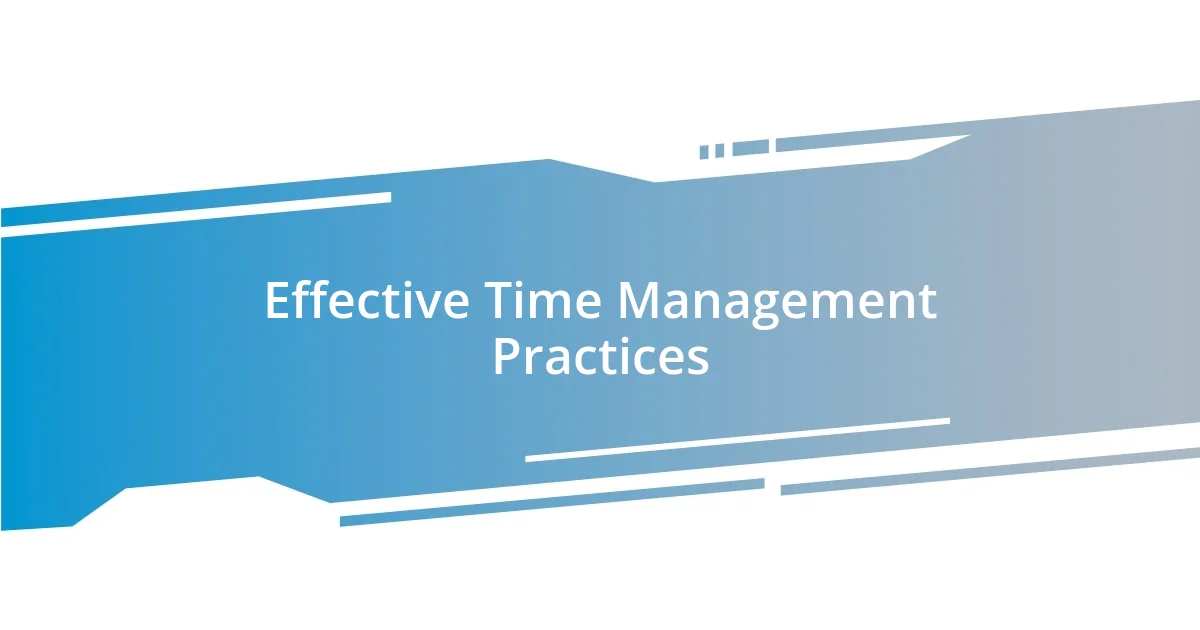
Effective Time Management Practices
Effective time management has been a game-changer for me, and I’ve learned that prioritizing tasks is essential. I often use the Eisenhower Matrix, which divides my tasks into four categories: urgent and important, important but not urgent, urgent but not important, and neither. By categorizing my to-do list this way, I can focus on what truly matters and stop wasting time on distractions. Have you ever felt like you were busy but not productive? I certainly have, and this method opened my eyes.
Another technique I find invaluable is setting clear deadlines for myself, even if they aren’t externally imposed. When I began assigning my own due dates, I noticed dramatic improvements in my productivity. For instance, I challenged myself to complete a project two days earlier than required. Not only did I finish ahead of schedule, but I also created some breathing room to handle unexpected tasks. Does self-imposed pressure make you more motivated too? It truly works for me!
Lastly, I’ve realized the importance of regular breaks in maintaining focus. The Pomodoro Technique, where I work for 25 minutes and then take a five-minute break, has helped me recharge without feeling overwhelmed. I remember one day when I was deep in a project, and I felt my concentration slipping. After a quick five-minute walk, I returned with fresh ideas and renewed energy. It’s fascinating how stepping away can be just as critical as the work itself, don’t you think?
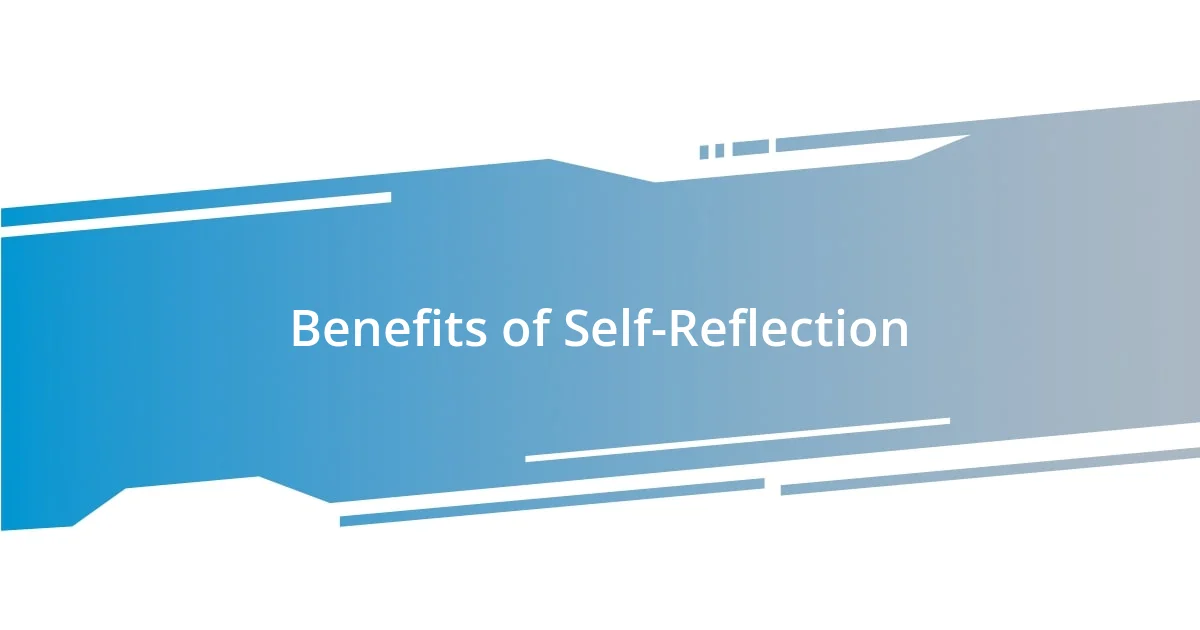
Benefits of Self-Reflection
Self-reflection offers profound insights that can lead to significant personal growth. I’ve experienced moments where taking a step back allowed me to understand my emotions better, particularly during challenging situations. For instance, after a particularly stressful week, I sat down to journal about my feelings. That simple act helped me uncover underlying worries that I hadn’t fully acknowledged, leading to meaningful changes in my daily routines.
Moreover, self-reflection has taught me to gain clarity on my goals and values. I often find myself contemplating what truly matters during quiet moments, such as early mornings with a cup of coffee. It’s during these times that I can map out my ambitions and align my actions with my core beliefs. Have you ever felt a sense of direction wash over you while sitting in silence? That’s the power of tuning into your inner thoughts.
Lastly, the practice of self-reflection encourages accountability. Once I took a moment to evaluate my past decisions, I realized how important it was to own my choices, both good and bad. This led me to embrace failures as stepping stones rather than setbacks. I’ve learned that reflecting on those experiences not only breeds resilience but also allows me to approach new challenges with a fresh perspective. Isn’t it fascinating how looking inward can reshape our future?












